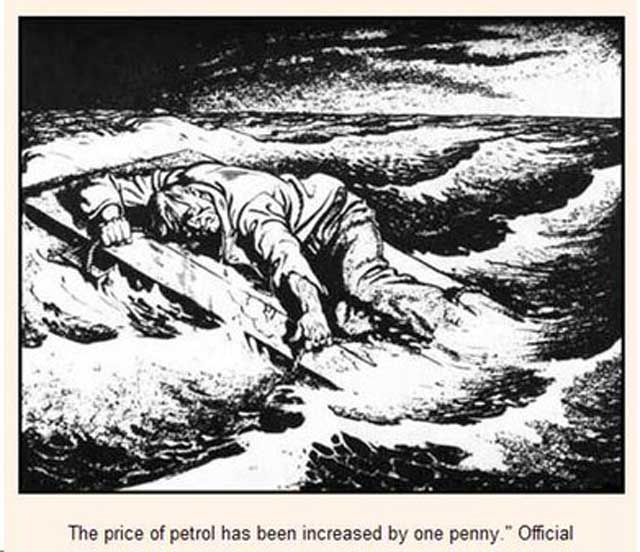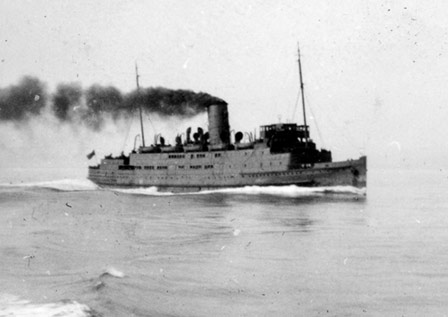Friday 6 March 1942
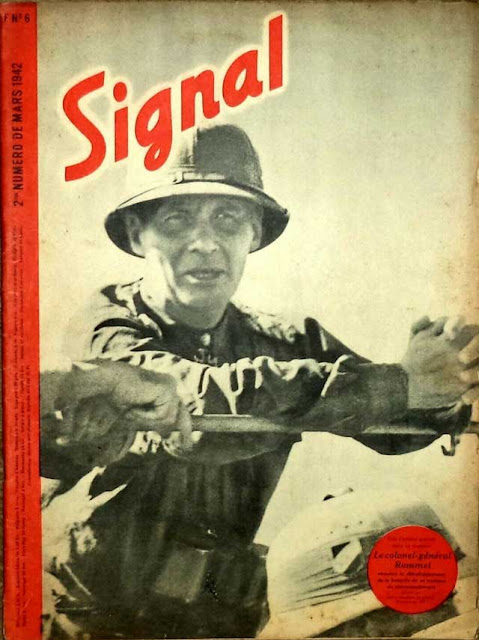 |
| Signal Magazine, March 1942 #6. |
sneering attacks, mischievous misrepresentations and the sort of thing inspired by a desire for reckless sensation.Morrison warns them that he can and will shut down the Mirror under Emergency Regulation 2D of the Emergency Powers Act just as he did the Daily Worker. Unknown to the Mirror leaders, Morrison also initiates a Special Branch investigation into both the Mirror's ownership interests and Zec's personal background. The investigation finds nothing untoward (aside from some connections to socialist Sir Stafford Cripps) and the whole matter is eventually dropped after the Mirror adopts what Churchill considers to be a more patriotic tone.
 |
| The 6 March 1942 Hope Star of Hope, Arkansas (later famous for Bill Clinton) prints a helpful map of Japanese conquests and goals in the Pacific. |
 |
| A street scene in the 6 March 1942 Pittsburgh Post-Gazette (p. 25). |
Japanese aircraft and naval forces remain active offshore, meaning any Allied attempt to escape will be contested. Japanese aircraft sink 174-ton Dutch freighter Dayak south of Tjilatjap.
 |
| HNLMS Pieter de Bitter, scuttled on 6 March 1942. |
- 513-ton Dutch freighter Reteh
- 1187-ton Dutch freighter Pasir
- 395-ton Dutch tug Overijssel
- 525-ton Dutch minesweeper Pieter de Bitter
- 173-ton Dutch freighter Moeara Boelian
- 525-ton Dutch minelayer Serdang
- 1787-ton Dutch freighter Sipirok
- 1594-ton Dutch freighter Sipora
The Japanese advance on Borneo, too. They take the town of Sampit.
 |
| Rangoon, Burma. 6 March 1942. The work of demolition parties as seen from the last aircraft to be flown out. Smoke rises from charges set at a strategic site in Rangoon. The pilot was Sergeant R. P. Curtis of Manly, NSW, and the wireless operator-air gunner Sergeant J. L. Brinkley of Cottesloe, WA, who took this photograph. A portion of their Blenheim aircraft is at the left of the picture. Australian War Memorial P02491.173. |
Japanese aircraft strafe and sink 527-ton Philippines freighter Fortuna MV near the Leper Colonies on Cullion Island, Calamian Islands. The ship has been requisitioned by the US Army to carry supplies to the colony. The strafing sets fire to gasoline drums on the deck which turns the ship into a blazing inferno that sinks about a quarter of a mile from the docks.
 |
| "Front-Illustrierte," No. 6, March 1942. |
European Air Operations: The air front remains quiet as the RAF continues to build up its forces after the successful Billancourt Raid of 3/4 March.
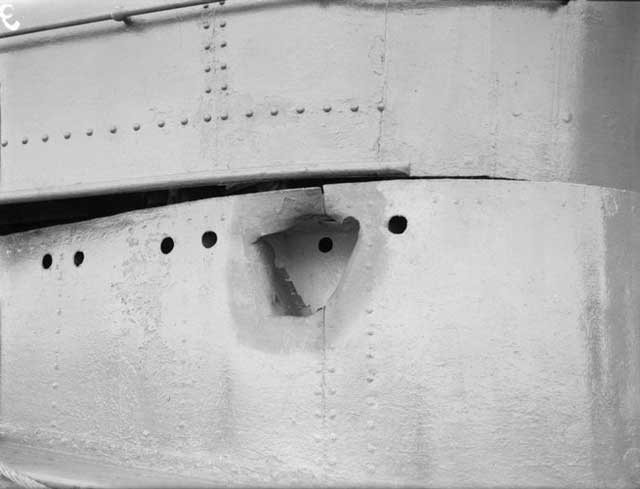 |
| Damage to the conning tower of Royal Navy submarine HMS Thrasher at Alexandria, Egypt caused by a 6 March 1942 Luftwaffe attack. The bomb failed to explode but pierced the steel. © IWM (A 13569). |
U-710 (Kptlt. Horst Degen), on its second patrol out of St. Nazaire, torpedoes and sinks independent 213-ton British freighter Rononia about 200 miles southeast of Iceland. This follows a 12-hour span in which Degen works patiently to get into firing position. He finally attacks at 23:06 on the surface and observes the Rononia break in halves immediately due to an internal explosion. All 11 men on board perish.
U-587 (Kptlt. Ulrich Borcherdt), on its second patrol out of St. Nazaire, torpedoes and sinks 900-ton Greenlandic freighter Hans Egede south of Newfoundland. All 24 men on board perish.
 |
| US freighter Steel Age, sunk on 6 March 1942. |
U-505 (Kptlt. Axel-Olaf Loewe), on its second patrol out of Lorient, torpedoes and sinks independent 7587-ton Norwegian tanker Sydhav between Trinidad and Freetown. The ship sinks quickly but 24 men manage to survive on two rafts. There are twelve deaths. The survivors later recall that Loewe did not bother to pick them up or another survivor in the water who he questions (who later dies) even though he had the opportunity.
 |
| Dutch freighter Astrea, sunk on 6 March 1942. |
Enrico Tazzoli also shells and sinks 3156-ton Norwegian freighter MV Tønsbergfjord in the same area. There are 33 survivors.
Italian submarine Giuseppe Finzi torpedoes and sinks 7011-ton British freighter SS Melpomene just east of the Caribbean while en route in ballast from Belfast to Baton Rouge. There are 49 survivors.
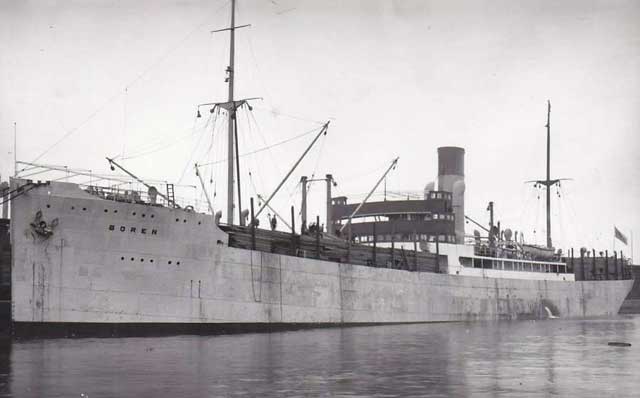 |
| Swedish freighter Skane, sunk on 6 March 1942. |
German freighter Lahneck collides with another ship, SS Treunfels in the Baltic near Oksay and sinks after being taken in tow.
German battleship Tirpitz and four destroyers leave their base at Trondheim in central Norway on a rare sortie to intercept an Allied Russia convoy. The Allied ships are in Convoys QP-8 and PQ-12. The Royal Navy quickly learns that the Tirpitz is at sea and plans countermeasures.
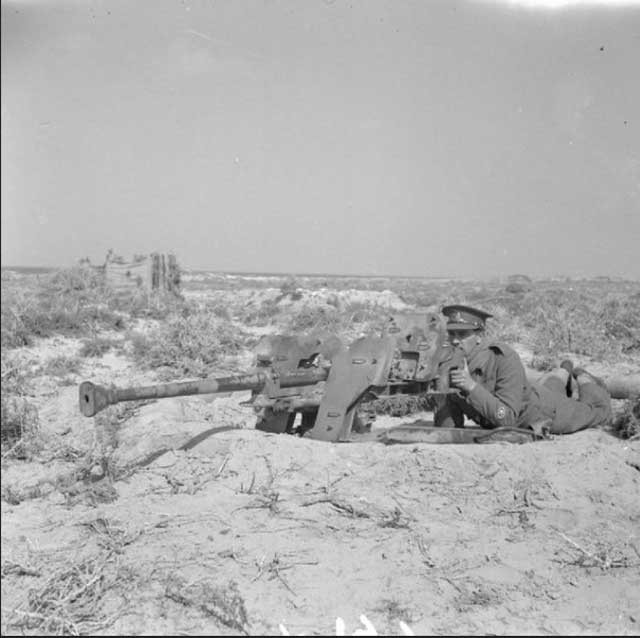 |
| A British officer with a captured German 28mm Panzerbüchse 41 (sPzB 41)anti-tank gun in North Africa, 6 March 1942. © IWM (E 9090). |
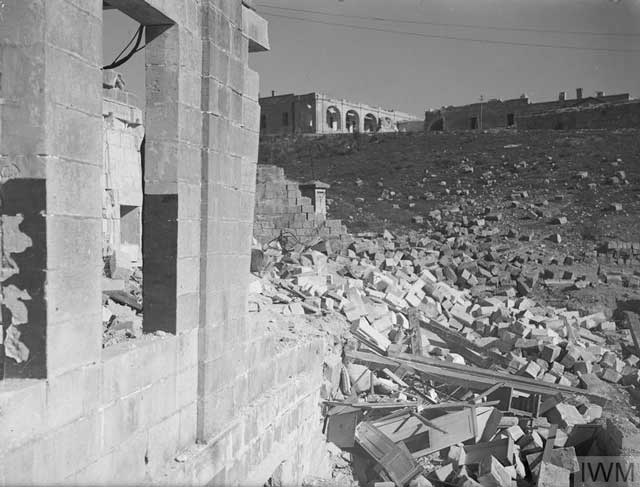 |
| Bomb damage to the wardroom cabins at the Submarine base on Manoel Island, Malta from the attack of 6 March 1942. The damage is to wardroom cabins and laundry. This is the most serious damage during the attack on the submarine base. © IWM (A 9565). |
 |
| The U.S. Navy light cruiser USS St. Louis (CL-49) off the Mare Island Navy Yard, California (USA), on 6 March 1942. Photograph from the Bureau of Ships Collection in the U.S. National Archives. |
Real danger would exist for all Japanese if they remained in the combat area. The least act of sabotage might provoke angry reprisals that easily could balloon into bloody race riots.The editorial is issued under the newspaper's byline but reads as though it were written by the Army.
Future History: Benjamin Edward Castleberry Jr. is born on March 6, 1942, in Jonesboro, Arkansas. He becomes Ben Murphy when his mother remarries in 1956. Ben becomes an actor after attending eight colleges and quickly becomes a success. He appears as a guest star in episodic TV series such as "The Name of the Game" before nabbing a starring role in popular series "Alias Smith and Jones" from 1971-72. After that, Ben bounces around between series such as "Griff" without gaining much traction. Ben Murphy goes on to become a regular on television in guest-starring roles and occasion films, most recently in "The Genesis Code" (2010) and appears to be retired as of this writing.
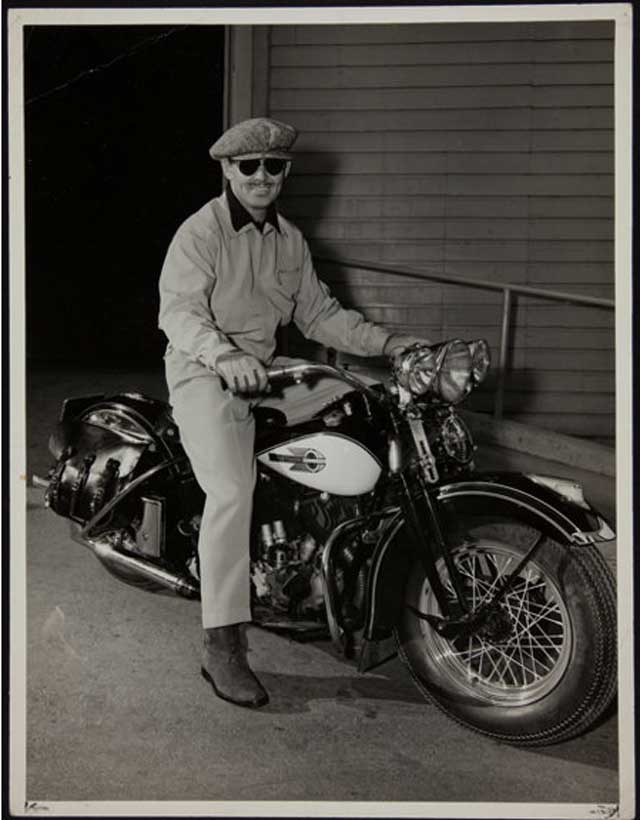 |
| Clark Gable on a 1939 Harley-Davidson EL, March 1942 (courtesy MGM). |
March 1942
March 1, 1942: Second Battle of Java Sea
March 2, 1942: Huge Allied Shipping Losses at Java
March 3, 1942: Japan Raids Western Australia
March 4, 1942: Second Raid On Hawaii
March 5, 1942: Japan Takes Batavia
March 6, 1942: Churchill Assaults Free Speech
March 7, 1942: British Defeat in Burma
March 8, 1942: Rangoon Falls to Japan
March 9, 1942: Japanese Conquest of Dutch East Indies
March 10, 1942:US Navy attacks Japanese Landings at Lae
March 11, 1942: Warren Buffett's First Stock Trade
March 12, 1942: Japan Takes Java
March 13, 1942: Soviets Attack In Crimea Again
March 14, 1942: The US Leans Toward Europe
March 15, 1942: Operation Raubtier Begins
March 16, 1942: General MacArthur Gets His Ride
March 17, 1942: MacArthur Arrives in Australia
March 18, 1942: Japan Attacks In Burma
March 19, 1942: Soviets Encircled on the Volkhov
March 20, 1942: "I Shall Return," Says MacArthur
March 21, 1942: Germans Attack Toward Demyansk
March 22, 1942: Second Battle of Sirte
March 23, 1942: Hitler's Insecurity Builds
March 24, 1942: Bataan Bombarded
March 25, 1942: Chinese Under Pressure in Burma
March 26, 1942: Win Or Die, Vows MacArthur
March 27, 1942: The Battle of Suusari
March 28, 1942: The St. Nazaire Commando Raid
March 29, 1942: The Free Republic of Nias
March 30, 1942: Japanese-Americans Off Bainbridge Island
March 31, 1942: Japanese Seize Christmas Island
2020
